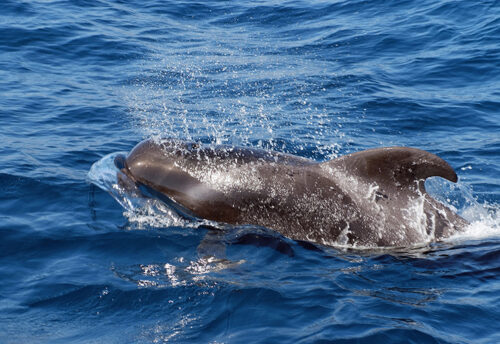
The Philippine sailfin lizard, aka Philippine sailfin dragon, layagan, balubid, or ibid, is a larger semiaquatic species of agamid lizard that is endemic to all of the major islands of the Philippines. These lizards face the threats of habitat destruction at the hands of the logging industry; hunting; trapping, for the pet trade; and pollution. However, they are abundant enough to earn the listing of Least Concern by the IUCN. Their populations are decreasing though.
First the Stats…
Scientific name: Hydrosaurus pustulatus
Weight: Up to 5 lbs.
Length: Up to 4 feet, including their tail
Lifespan: Up to 10+ years
Now on to the Facts!
1.) These lizards prefer fresh and brackish water habitats, including tidal zones like mangrove forests and mudflats.
2.) They can also climb well and enjoy a semi-arboreal (spend part of their life in trees) lifestyle.
3.) Philippine sailfin lizards are notoriously difficult to breed in captivity, thus the over-collection of their eggs and young from the wild.
4.) These critters were first discovered in 1829 by the Baltic German naturalist Johann Friedrich von Eschscholtz.
5.) Their diet consists of various insects and crustaceans, plus leaves and fruits.
But wait, there’s more on the Philippine sailfin lizard!
6.) It is illegal to take them from the wild or to export them out of the country.
7.) Philippine sailfin lizards had been captured and sold in higher amounts between 1980 – 1990, before it became illegal.
Did you know…?
Like the basilisk lizard, these critters can seemingly run on water when spooked. However, adults lose this ability due to their greater weight.
8.) While they can scratch and certainly bite when mishandled, these lizards are not venomous.
9.) Females have the capability to lay several clutches of up to 8 eggs each year.
10.) Eggs hatch in up to 65 days and the hatchlings are precocial (totally self sufficient).
Now a Short Philippine Sailfin Lizard Video!
Be sure to share & comment below! Also, check out the Critter Science YouTube channel. Videos added regularly!
Want to suggest a critter for me to write about? Let me know here.
Some source material acquired from: Wikipedia & IUCN
Photo credit: Janine Jaylo Lerios



